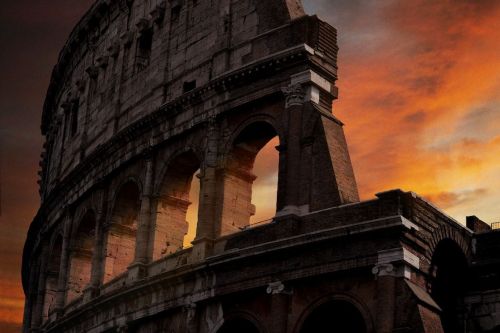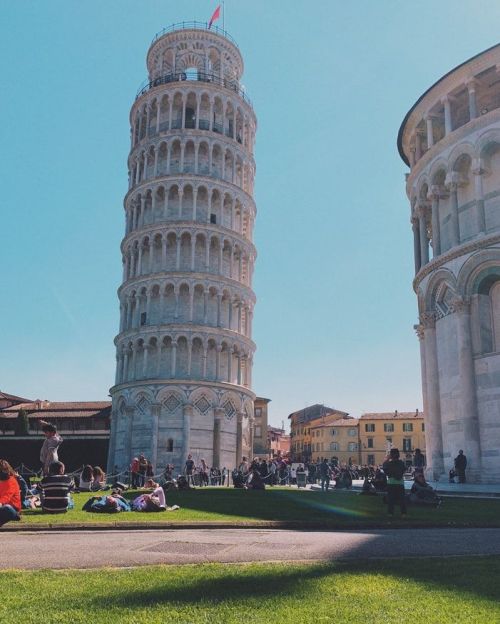Palermo is a city founded by the Phoenicians over 2700 years ago. Located in a valley that the Arabs called Conca d’Oro in the 9th century, it is surrounded by a mountain range, which makes it an extremely picturesque place. Palermo is famous for its history, culture, and extraordinary architecture, as well as for the mafia, for which it has become the headquarters of its nefarious activities.
It is located in the north-west of Sicily, on the Gulf of Palermo in the Tyrrhenian Sea.
Today, both Papireto and Kemonia are covered with buildings, but the shape of the former watercourses can still be recognized today because the streets that were built on them follow their shape.
The Oreto, on the other hand, flows through the city, separating its center from the western districts and industrial districts.
In the 9th century, this basin was called Conca d’Oro (Golden Pool) by the Arabs.
The highest peak of the range is La Pizzuta, approximately 1333 meters tall, but historically the most important mountain is Monte Pellegrino, 606 meters tall. The hill is geographically separated from the rest of the range by a plain.
Monte Pellegrino offers panoramic views of the city, the surrounding mountains, and the Tyrrhenian Sea. In his book “A Journey to Italy,” Goethe described Monte Pellegrino as the most beautiful promontory in the world.
On 15th July 1624, probable relics of this 12th-century saint were discovered in a cave on this site. After the relics were moved through the city, the devastating it plague (Black Death) disappeared, so the inhabitants of Palermo welcomed Saint Rosalie as the patron saint of the city, and a sanctuary was built in her honor.
On 14th July, people in Palermo celebrate the annual Festino, the most important religious event of the year. It is a procession that passes through the main street of Palermo to commemorate a miracle attributed to the saint. In 1787, Goethe visited the place and described it as “one that better suits the humility of a saint than the lavish celebrations celebrated to commemorate the departure from the world.”
The average annual air temperature there is 18 degrees Celsius, which makes Palermo one of the warmest Italian cities. There are 2530 hours of sunshine per year.
There is also snowfall in Palermo. However, this has been a rate phenomenon, since the 1940s until today, snow has fallen there several times, and the city was covered with several centimeters of snow.
Summers in Palermo are long, hot, and dry, while winters are mild and changeable, with rainy weather.
These, in turn, are divided into eight governmental community boards. The city has 673.735 inhabitants (2017).
The Palermo urban complex is the fifth most populous urban complex in Italy, with approximately 1.2 million people living here.
Over 97 percent of Palermo’s population is of Italian origin. The largest group of immigrants in this city comes from South Asia, mainly from Bangladesh and Sri Lanka.
It then became the property of Carthage. Two Greek colonies were established, known collectively as Panormos (the Carthaginians used this name on their coins after the 5th century BC).
As Panormos, the city became part of the Roman Republic and the Roman Empire for over a thousand years. From 831 to 1072 the city was under Arab rule. During the Emirate of Sicily, it first became the capital of Sicily with the name Bal’harm.
It was a turning point in the history of the city, because the Arabs, who ruled for over two centuries, brought Palermo into a golden period of development.
After the Norman conquest, Palermo became the capital of the new kingdom of Sicily, which lasted from 1130 to 1816.
The Normans decided to leave the defeated Arabs in the city and build the future power of Palermo together with them. Arab merchants and craftsmen continued to run their businesses in the city. Men were recruited into the army, and the royal court was filled with Arab dignitaries as ministers and advisors.
Palaces and churches were built topped with Arab domes and decorated with Byzantine mosaics, such as Palazzo dei Normani with Capella Palatina, or churches: San Giovanni degli Eremiti, San Giovani dei Lebrosi, San Cataldo, and others.
The Sicilian throne was taken over first by the German dynasty (Hohenstaufen), then the French (Anjou dynasty), and finally the Spanish (Aragonese dynasty). Palermo's changing hands ended in 1860 with the unification of Italy.
The main target of the raids was the port of Palermo, but the surrounding districts also suffered and were effectively destroyed, as was a significant part of the city. There were also many civilian casualties.
In 1947, it became the capital of the Region with Special Status, whose seat is in the Palazzo dei Normanni (Royal Palace of Palermo).
The activity of the Sicilian Mafia in Palermo was particularly notorious in one area of the city, Passo Rigano, where the Mafia not only engaged in extortion but also played a large role in the city’s legal economy (wholesale food delivery, online betting, and gambling).
The Palermo mafia was strongly linked to American organized crime, and in particular to the Gambino family.
The ancient patron of the city was the Genius of Palermo - the ancient numen and genius loci, the protector of this place, who became the secular patron of modern Palermo.
It is dedicated to Giovanni Falcone and Paolo Borsellino, two anti-mafia judges killed by the mafia in the early 1990s.
The airport is located 32 kilometers west of Palermo. The second airport in the city is Palermo-Boccadifalco.
From here, ferries connect Palermo with Cagliari, Genoa, Livorno, Naples, Tunis, and other cities and carry a total of almost two million passengers a year. It is also an important port for cruise ships.
It was officially founded in 1806, but historical sources say that medicine and law were taught here from the end of the 15th century.
It is a both botanical garden and a scientific and educational institution of the Faculty of Botany of the University of Palermo.
The garden is located 10 meters above sea level. It covers an area of approximately 0.12 square kilometers, on red soil that evolved on tufa limestone.
Among them, palaces, museums, and churches are worth mentioning:
The first ring surrounded the ancient center of the Phoenician city. Several historic gates have been preserved in the city wall.
Teatro Massimo (The Greatest Theater) opened in 1897. It is the largest in Italy (8000 square meters) and one of the largest in Europe (third after the Paris Opera and the Vienna Opera).
The theater is famous for its excellent acoustics. Enrico Caruso appeared on its stage.












